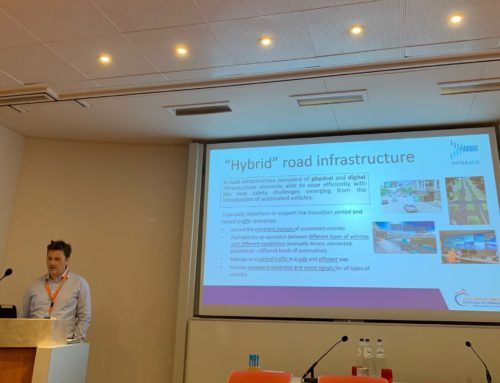INFRAMIX installed new equipment for connected highways
Autopistas installed new technological equipment on the Spanish Inframix test site in Girona on 12th June 2019.
What is INFRAMIX new road equipment?
Autopistas installed several new technological innovations on the Spanish test site of the project in Aiguaviva, near Girona. The highway AP-7 test site is part of the TEN-T Mediterranean corridor connecting France and Spain. Among other things, the new road equipment includes several sensors to monitor the vehicles passing through this specific piece of highway and tools to enable the communication between the road infrastructure and the automated vehicles (AVs), in other words, I2V and V2I.
Furthermore, Autopistas elaborated new Variable Message Signs (VMSs), showing a light blue car connecting to the outer environment. Consequently, the Inframix VMSs have been installed in the Spanish highway in order to allow the demonstrations of the Inframix scenarios.
Autopistas installing the new Inframix road signs on the Spanish test site.
What are the INFRAMIX scenarios?
Inframix is addressing three main scenarios related to connected infrastructure, namely dynamic lane assignment, roadworks and bottleneck. More specifically, Inframix is enabling communication between connected infrastructure and autonomous vehicles to adapt their behaviour to traffic conditions. For example, the connected road infrastructure could dedicate a lane to autonomous vehicles to ensure smoother traffic. Similarly, changes in the AVs behaviour could be needed in case of bottlenecks and roadworks in order to guarantee an uninterrupted, safe and efficient traffic flow.
What now?
Inframix will carry out demonstrations in the Spanish test site in September 2019. The results will be on the agenda of next Inframix stakeholder workshop organised jointly with TransAID in Graz, Austria in October 2019.
Interested in our activities? Have a look at the dedicated page and follow us on Linkedin and Twitter.









